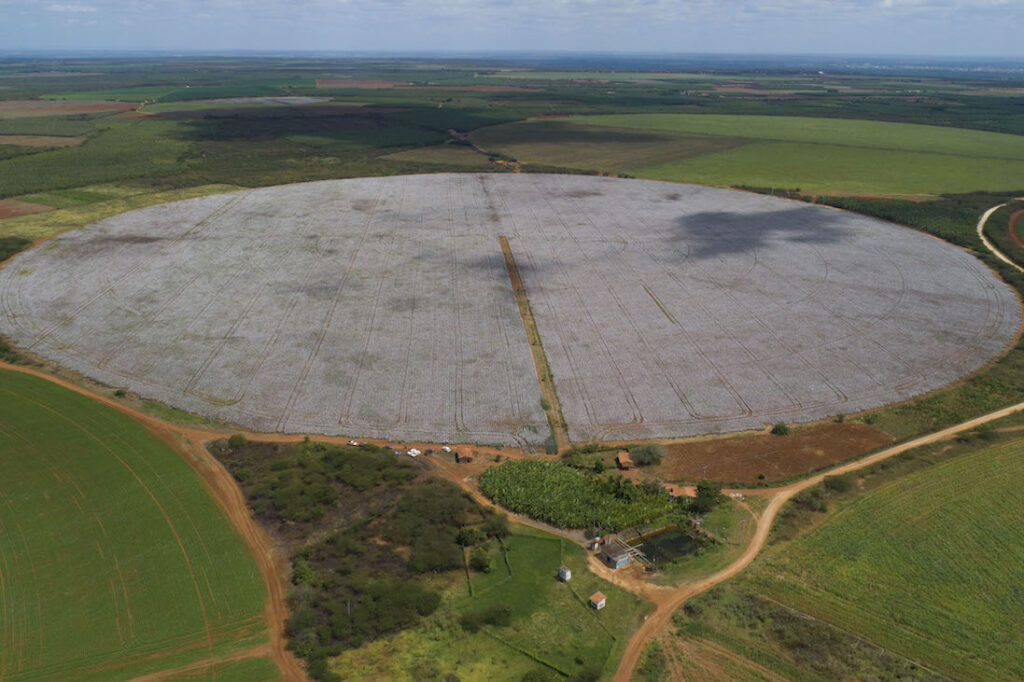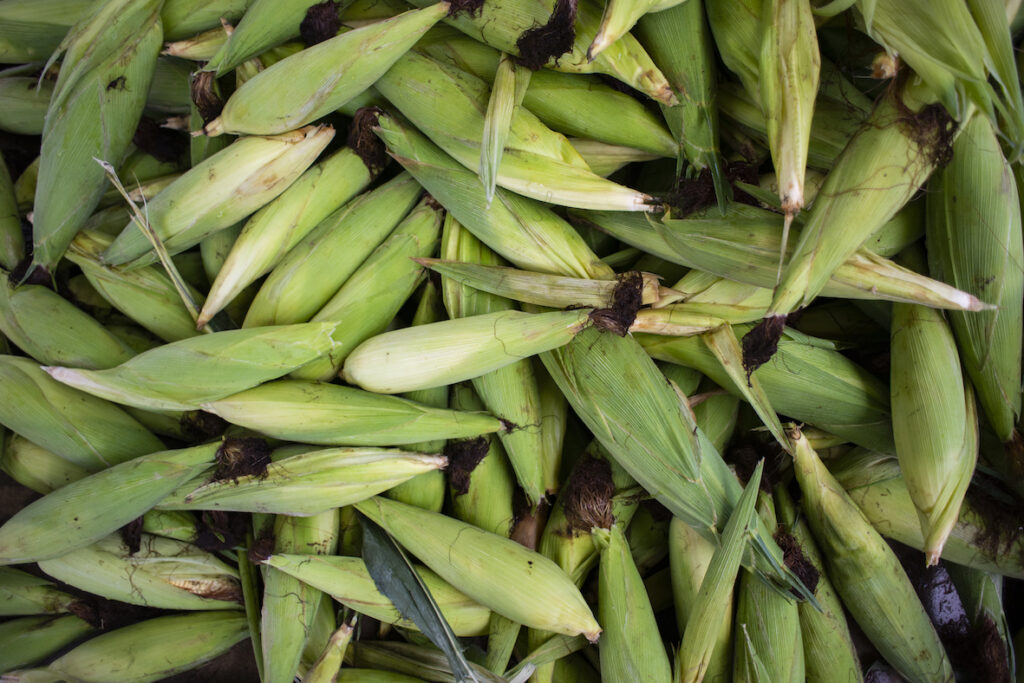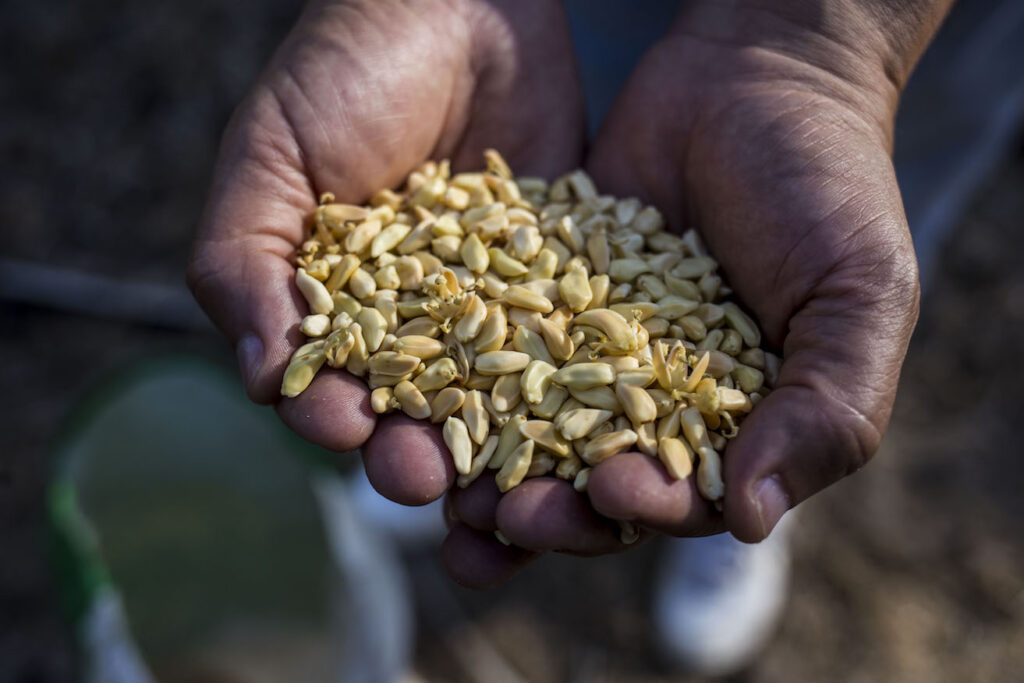New winds for the Agribusiness

Agribusiness has become a thriving reality in the state of Ceará, with development over the last few decades. A diversified production, which adopts the most modern technology in the segment, with fundamental government participation in the formulation of strategic plans for the expansion of the sector.
Today, Ceará and the Northeast, despite the droughts in the semiarid region, show visible progress both in family farming and in agribusiness, normally supported by the entrepreneurs themselves and by official actions.
"Carciniculture (captive shrimp farming), fruit and vegetable farming and dairy farming are the three sectors of Agribusiness that we should pay special attention to. These are the sectors that can most directly impact the lives of rural producers”, says Amílcar Silveira, President of the Ceará Federation of Agriculture and Livestock.
In 2021, according to data from the Ministry of Agriculture, Livestock and Supply (Mapa), the Brazilian Institute of Geography and Statistics (IBGE) and the Ceará Institute for Economic Research and Strategy (Ipece), agribusiness in Ceará ended the year with the GVP (Gross Value of Production) of 10.4 billion Reals (about 1.9 billion dollars), registering an increase of 26.5% over 2020, and an average rate of 10.5% per year. The main crops in the States amounted to 4.39 billion Reals (about 828 million dollars), or 42.4% of Ceará's agricultural GVP. Livestock totaled 5.27 billion Reals (about 1 billion dollars) or 50.8% of the GVP and aquaculture 704 million Reals (about 133 million dollars) or 6.8% of the GVP.
Crops grew 17.6% in 2021 compared to 2020, with an average annual growth of 11.7%, highlighting fruits with 1.58 billion Reals (about 298 million dollars) and grains with 1 .22 billion Reals (about 230 million dollars). Fruits stand out in Ceará agriculture, especially among irrigated crops, along with vegetables, flowers and ornamental plants. Among the most economically important fruits are melons, watermelons, bananas, mangoes, passion fruit, acerola, coconut and cashew, for the domestic and export markets.
Poultry farming maintains its prominent position. According to data from the Ceará Poultry Association (Aceav), Ceará's poultry farming is among the most efficient in Brazil. Its productive park is spread over more than 60 municipalities. It guarantees the economy around 15 thousand direct jobs and 60 thousand indirect jobs. In terms of egg production, according to Aceav, Ceará is the second largest in the Northeast and eighth in Brazil. In chicken production, it occupies second position in the Northeast and the tenth in Brazil. In addition, Ceará is home to the only grandparent farm in the North and Northeast, which guarantees the supply of genetic material for the breeding of birds.
“We see a very big opportunity for those who want to invest in inputs to make the poultry industry grow, because the great challenge of poultry farming is in food, in feed. Today we have to import from other states, even though we have a promising state in terms of grain production, which has been growing a lot. So, this is the great challenge and the great opportunity for anyone who wants to invest in this sector. If we have a greater production of inputs within Ceará, we will be much more competitive. A very productive grain center that is unexplored is the Cariri region, where many grains can be produced”, says João Jorge Reis, president of Aceav. The consumption of inputs for feeding birds in Ceará, according to Aceav, reaches 50 thousand tons per month of corn and 25 thousand tons of grain + soybean meal per month.

In exports, according to data from COMEX/STAT of MDIC, the State of Ceará stands out nationally as the country’s fifth largest fruit exporter, the principal producer and exporter of cashew nuts, principal exporter of coconut water, principal exporter of bananas to Europe, standing out in the exports of fruit juices, honeybees, vegetables, flowers, ornamental plants and ornamental fish.
Besides this, Ceará stands out as the principal exporter of seafood, mainly lobsters, fish and canned fish. In continental aquaculture it is the largest producer of shrimp in Brazil and a traditional producer of Tilapia, experimenting with new technologies and making genetic improvements. There is still enormous potential for continental and maritime exploitation of aquaculture products.
Although it is the most recent, the sector of irrigated agriculture is the most dynamic of Ceará's agribusiness, although representing only about 5% of Ceará’s total planted area, it accounts for about 35% of Production and 50% of the Gross Value of Production (data from Sedet/SAN and IBGE 2021). Moreover, as a potential to increase the added value in this sector, the introduction of new alternative crops is paramount, especially crops with higher added value, lower water consumption and higher job generation. This is the current focus of Ceará, translated into the program of water use efficiency in the agricultural sector (FAO/Sedet-Adece/Funceme program).
Protected Cultivation, Mapping, Capacity Building, Infrastructure and Execution
Ceará is working in partnership with several local, regional and foreign institutions to start, in the city of Barbalha (504 km from Fortaleza), in the Cariri region, a Technology Center in Protected Cultivation (CTCP) to attend the production of fruits, leafy vegetables (lettuce, for example), flowers, and also to breed fish and shrimp. Protected cultivation uses greenhouses (usually plastic covers) and guarantees advantages over traditional techniques: better use of water and soil; lower incidence of pests and, therefore, lower consumption of pesticides; better protection against climate variations; and chiefy, items with lower prices for the rural producer. Some producers estimate economic gains close to 400% in protected crops in relation to traditional ones.
This experience is already successfully applied in Holland, Israel, and Spain, among other countries. In Ceará, there are already initiatives of this type. But CTCP's proposal is broader: to become a center that spreads this technology to other regions. To achieve this goal, Sedet sought the best partners, such as the Dutch University of Wageningenem - the main reference in the sector, Embrapa Tropical, based in Fortaleza, as well as experts from Unicamp and the UFC itself. But there are also several other prominent players in the project: Faec, Senar, BNB, BB, Mapa, Insa.

This control allows a reduction in the effects of seasonality, favoring a more balanced supply of cultivated species. There are also other advantages, such as the reduced pesticide use, higher productivity, better quality of the cultivated products, and a greater number of jobs per hectare.
Introduction of Alternative Crops - Fruticulture
The advances in studies for new techniques, technologies and plant species are helping agribusiness in Ceará to get around the state’s characteristic semi-arid climate and increasing the investment in the so-called alternative crops, products that were not yet cultivated in Ceará but show strong potential. One of these crops that is emerging strongly is cacao, which after a few years of research has proved to be viable, with productivity even higher than that observed in the Recôncavo Bahiano, a region that has been cultivating cacao since colonial times in Brazil.

Besides cacao, pitaya is another example of alternative crops encouraged and in expansion in Ceará. Being a cactaceous plant, characteristic of semi-arid climates, the pitaya adapts easily to Ceará. It is a high value-added crop, consumes little water, and besides all this, is a good generator of jobs, as it needs manual handling. Other initiatives include blueberry and avocado. Both should start being produced in Serra da Ibiapaba, which already has avocado cultivation.
Ceará honey emerges in the international market
Beekeeping is responsible for the development of several municipalities in Ceará, contributing to the development and quality of life of the population dedicated to this activity.
“The differentials of Ceará honey are precisely in the flora of the caatinga. The caatinga is a northeastern biome of great impact in Ceará, with the presence of the quince tree, the velame, the bamburral, the jetirana, the mofumbo, the jiquiri, the jurema, vegetation suitable for the production of honey", says Roberto Cariri, beekeeper and Secretary of Tourism and Economic Development of Amontada. “The honey from these flowers is organic honey, that is, there is no possibility of controlling pesticides. Therefore, today it is a highly competitive product and a great value aggregator in the foreign market”, he adds.
The regions of Ceará for beekeeping are: Cariri, Baixo Jaguaribe, Sertões do Inhamuns and Crateús and Sertão Central, with emphasis on the municipalities of Parambu, Cariús, Pedra Branca, Tabuleiro do Norte and Jaguaribe. According to data from the Brazilian Institute of Geography and Statistics (IBGE), in 2019, 2,677 tons of bee honey were produced with a value of 19.6 million Reals (about 3.7 million dollars). In 2020, this value more than doubled, reaching 3,895 tons, which generated 39.25 million Reals (about 7.4 million dollars).
Government actions for Agribusiness in Ceará
-Promote efficiency in water use and in the management of water resources.
-Encourage new technologies and agricultural activities.
-Encourage research actions, scientific and technological development and technology transfer.
-To support agricultural defense and modern legislation for the sector.
-To attract investments and promote the Agribusiness of Ceará.
-Planning and supporting the logistic infrastructure for farming and fishing in Ceará.
Government guidelines for Agribusiness in Ceará
-Redefine areas with greater economic potential.
-Identify high value-added crops.
-Prioritize crops with greater efficiency in water use.
-Promote the generation of employment and income.
-Support new production technologies for the industry.
-Encourage innovative modes of technical assistance.
-Elaborate data and indicators on agribusiness.
-Create integrated information management for dynamic decision-making by investors.
-Support the access of Ceará's companies to differentiated markets.
-Promote the expansion of exports and substitution of imports.
-Increase the participation of agribusiness in foreign trade.
-Structure the agricultural defense policy.
-Participate and stimulate the participation of the sector in trade events.
Multimedia
Radio: Roberto Cariri, beekeeper and Secretary of Tourism and Economic Development of Amontada
Radio: Fernando Botelho, Controller Director at Crusoe Foods
Live: Erildo Pontes, Water Resources coordinator at Sedet, and Roberto Cariri, beekeeper and Secretary of Tourism and Economic Development of Amontada
Podcast: Silvio Carlos Ribeiro, executive secretary for Agribusiness
Podcast: José Aguiar, coordinator of the Leite Ceará project (Sedet)
Podcast: Pedro Lopes, Management Assistant I of the Coordinating Office for Fisheries and Aquaculture of the Sedet’s Executive Secretariat for Agribusiness
Want to know more about agribusiness-related procedures? Visit Investor Services Portal.


